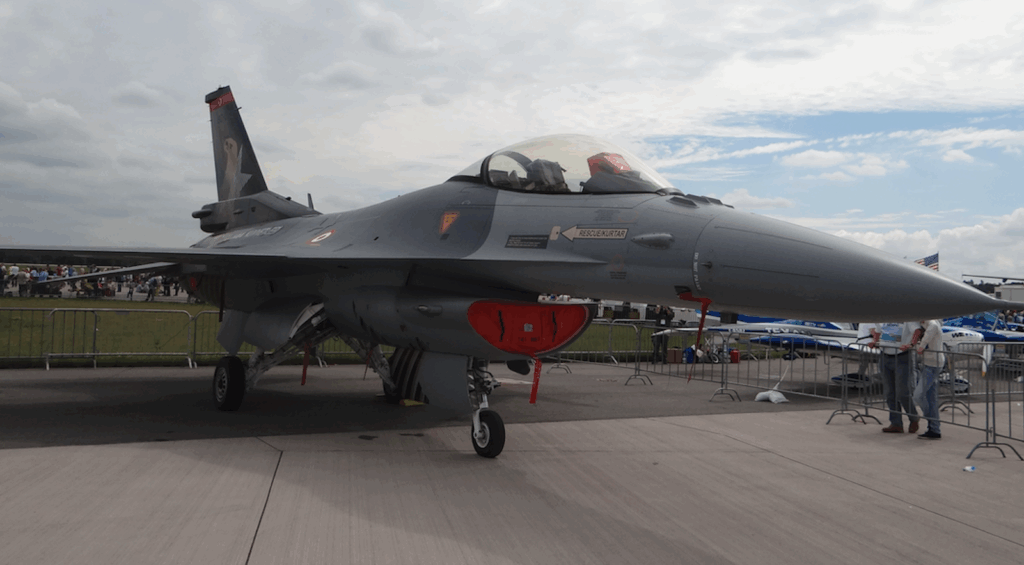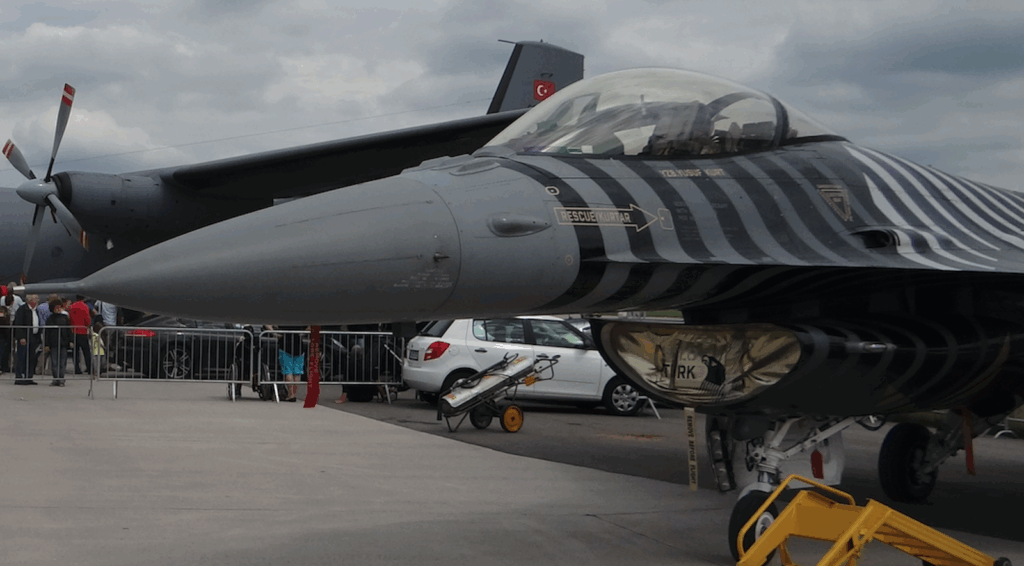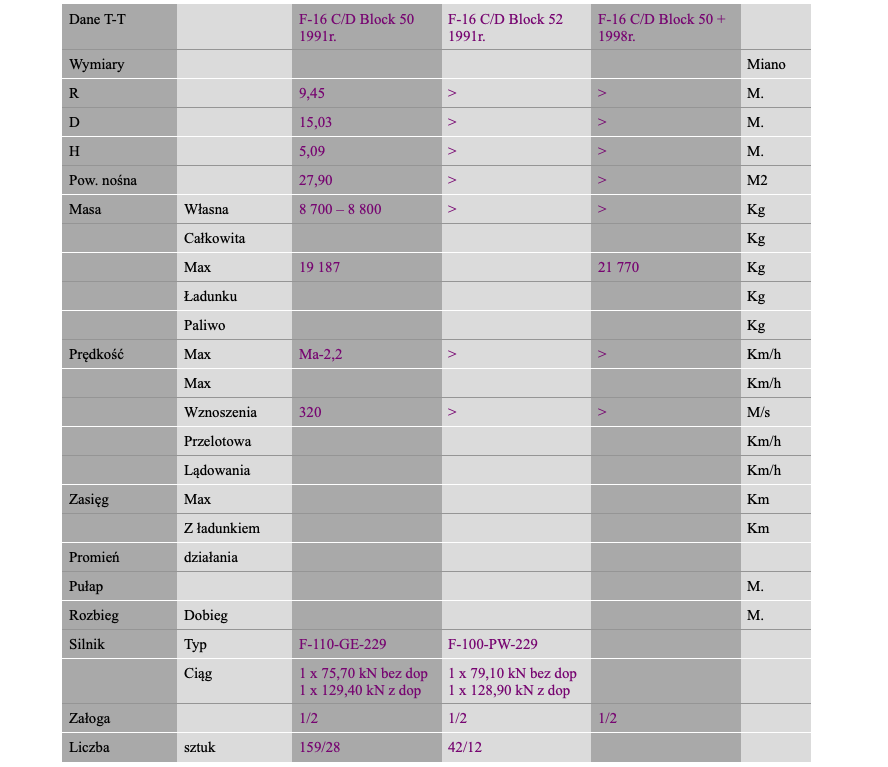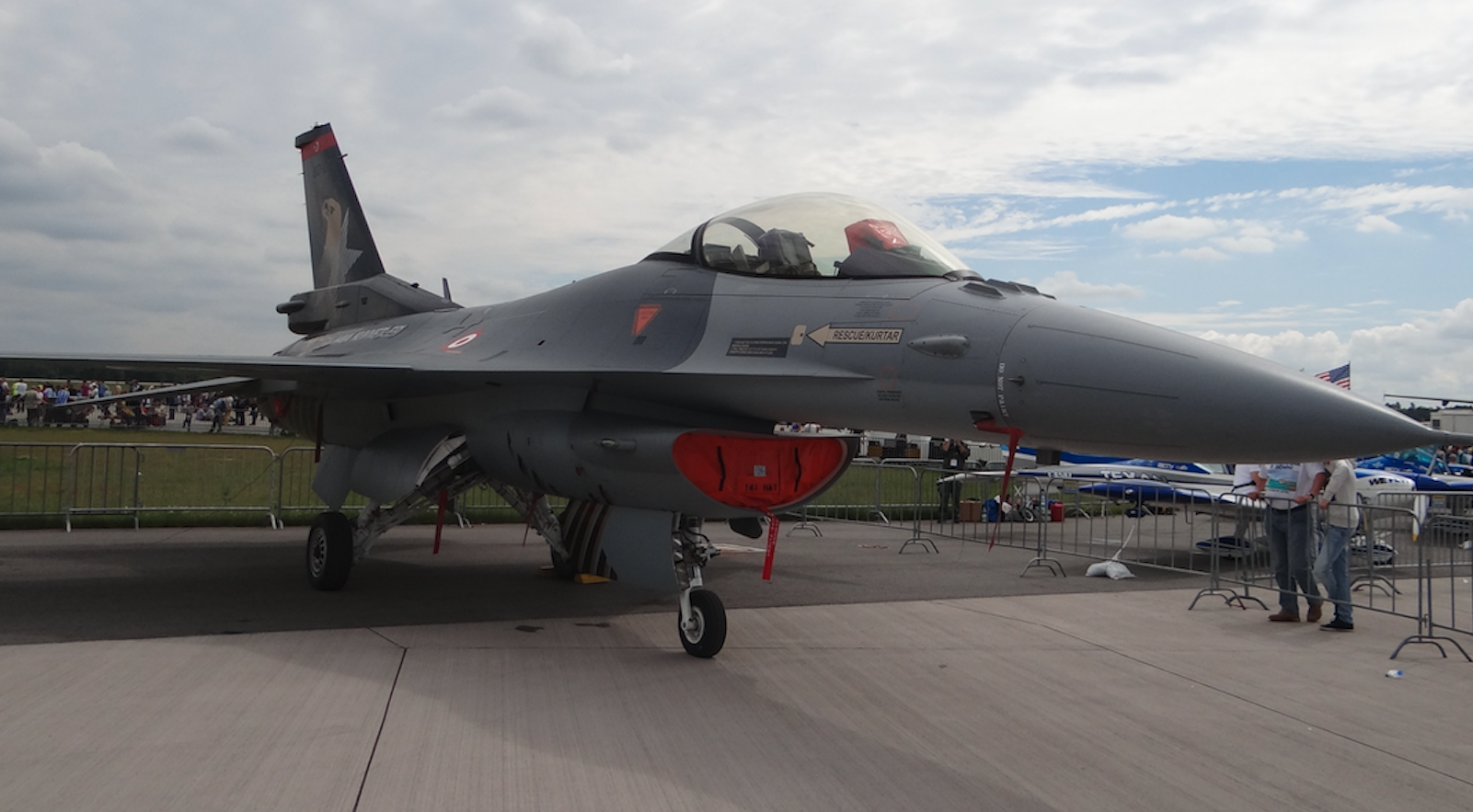Kraków 2005-03-17
Section 1991-10-22.
Lockheed Martin F-16 C/D Block 50/52/+. USA.
Multi-role fighter aircraft. See Chapter F-16 C/D.


Before discussing the new aircraft, let’s take a look at why the manufacturer of the popular F-16 aircraft changed. In December 1992, General Dynamics Tactical Military Aircraft Division was acquired by the giant Lockheed Corporation. In March 1993, Lockheed acquired General Dynamics’ fighter division and its plant in Fort Worth. This plant produced F-16 aircraft and components for the F-22. The transaction was valued at approximately $1.5 billion. In 1995, Lockheed merged with Martin Marietta, creating Lockheed Martin Aeronautics. Today, the latter part of the name is often omitted.
F-16 C/D Block 50/52. 1991.
At the turn of the 1980s, the Block 40/42 aircraft underwent several further modernizations, further enhancing their combat capabilities. The main change was the modernization of the WRe systems – the radiation warning device and the flare and dipole launchers. The former was replaced with the AN/ALR-56M – a slightly simplified version of the system used on the F-15 and also used on the F-16 Block 50/52 from the outset. The AN/ALR-56M operates over a much wider frequency range than the previously used systems, including the “K” band (20 to 40 GHz), and the interchangeable data library contains information on the latest air defense systems known to Moscow. The AN/ALE-40 flare launchers were replaced by the AN/ALE-47.
Towed decoy containers, the AN/ALE-50 Advanced Airborne Expendable Decoy (AAED), are also mounted in the center beams under the wings. The first such decoys began appearing on the F-16 in September 1996. The decoy is towed behind the aircraft on a fiber-optic cable. The decoy is equipped with an infrared radiation source and a special angular radar reflector. The F-16 carries four decoys, two in each of the booms.
The next stage of development was the F-16 C/D Block 50/52. The aircraft was specialized in defeating ground-based air defenses, primarily using AGM-88 HARM guided missiles.
The first aircraft of this type took off on October 22, 1991, and the first aircraft were delivered to the military in December 1991.
F-16 CJ/DJ – F-16 C/D Block 50 aircraft adapted to fire AGM-88 HARM missiles.
Modification of F-16 C/D Block 40/42 to Block 50/52.
In 1995, 38 F-16 C/D Block 40 aircraft from the 31st Fighter Wing at Aviano underwent modifications under the Sure Strike program. The aircraft’s cockpit equipment was adapted to accommodate NVGs and equipped with Improved Data Modems (IDMs). The IDMs are used to exchange information within the Link 16 (JTIDS) system. They enable data transfer between aircraft and between aircraft and ground units, such as forward FACs. AH-64D Apache helicopters also receive the same terminals, enabling mutual exchange of information and cooperation between aircraft and helicopters.
In 1997, another program, Gold Strike, was launched, aimed at providing the capability to transmit color video images via IDM, such as tactical situation maps entered at ground command posts. The Gold Strike program covered virtually the entire fleet of Block 40/42 aircraft, which received equipment similar to the Sure Strike and Gold Strike programs. The modernization was to be completed by 2003. An upgraded AN/APG-68 (V) 5 radar station with a more powerful processor was installed. The airframe has an 8,000-hour lifespan, which, based on an annual flight time of 200 hours, translates to a 40-year service life.
More powerful engines.
Simultaneously, more powerful engines were installed; F-100-PW-229 with 1 x 79.10 kN thrust, with 1 x 128.90 kN afterburning, or F-110-GE-229 with 1 x 75.70 kN thrust, with 1 x 129.40 kN afterburning. However, these engines initially experienced increasing operational problems, so in July 1991, the F-110 GE-100 version was reverted to until the fourth-stage fan was redesigned.
Further changes to Block 50/52.
One of the goals was to expand the aircraft’s strategic attack capabilities. This was implemented as part of the F-16 ES (Enhanced Strategic) subprogram. To this end, the aircraft was equipped with two conformal fuel tanks integrated into the aircraft’s aerodynamic design, extending its operational radius. Precise navigation is provided by a Honeywell H-423 inertial laser system coupled with GPS and a digital terrain reference navigation (TRN) subsystem, which also enables terrain-following flight and target designation. The upgraded AN/APG-68 (V) 9 radar accurately maps the terrain and can track small-sized fixed and moving objects. It is complemented by a thermal observation and targeting pod with laser rangefinding and target illumination. The new integrated avionics are coupled to the central computer via MIL STD 1553 B and MIL STD 1760 fiber-optic data buses. The pilot has access to a wide-angle head-up display and two color displays. Group interoperability is ensured by a Data Link 16 modem integrated into the JTIDS tactical information distribution system, a force-wide standard. Combat survivability is ensured by an integrated self-defense system, flight-tested from November 1994 to January 1995.
F-16 C Block 50 No. 93-120. 2002.
F-16 C/D Block 50/52 ground attack weapons: GBU-10/-12/-24 Paweway III laser-guided bombs. GBU-31/-32 JDAM bombs with INS/GPS guidance. INS CBU-103/-104/-105 WCMD bomb clusters with control systems. GBU-15 television-radio command bombs. AGM-65 G thermal imaging missiles. AGM-88 C HARM anti-radiation missiles. AGM-154 JSOW INS/GPS glide pods. AGM-158 JASSM tactical cruise missiles. AGM-84 Harpoon anti-naval missiles.
Block 50/52 air combat missiles.
A program to expand fighter capabilities was then implemented. A new radar station, for the first time, enables engagements with multiple targets flying in close formation. The radar station is coordinated with a thermal navigation and targeting system (internal FLIR targeting system) with a long detection range. Two sensors (upper and lower) are installed in the front of the aircraft. In close combat situations, the helmet-mounted sight proves its advantage. It works with the AIM-9X Super Sidewinder.
Offer and Production of the F-16 C/D Block 50/52.
F-16 I. Offer for Israel: A two-seat aircraft with enhanced strike capabilities, designated F-16 I, was proposed to Israel in 1995 as a cheaper alternative to the planned purchase of the F-15 I (F-15 E). However, due to the delays, Israel stuck with the F-15 I, which was delivered between 1998 and 1999. In 2001, the “Peace Marble V” contract was signed for the purchase of 102 F-16 I “Sufa” (Hebrew for Storm) aircraft. The aircraft were delivered between 2004 and 2009.
Norway – An aircraft with advanced fighter capabilities, designated F-16 C/D Block 50 N as an alternative to the Eurofighter, was offered to Norway. The contract was scheduled for signing in 1999, with deliveries starting in 2003. However, due to financial constraints, implementation has not yet taken place. Norway has opted for the F-35A, of which 52 were purchased. In January 2022, Norway ceased operating the F-16. The F-16 aircraft were sold or transferred to Romania.
F-16 C/D Block 50+. 1998 year.
Amid export failures in the second half of the 1990s, Lockheed Martin revised its program. The primary goal was to reduce the aircraft’s initial price. The IFTS thermal tracking system was eliminated, and the WRe stations were moved to a suspended pod. The avionics system made greater use of commercial technologies and equipment available in civil aviation. A braking parachute can be installed upon customer request. The aircraft thus configured was designated the F-16 C/D Block 50+ and intensive promotion began.
Greece F-16 C/D Block 50+. 2002. The fruits of this decision were not long in coming. In April 1999, Greece signed a contract for the delivery of 50 aircraft: 36 single-seaters and 14 two-seaters. Deliveries lasted from 2002 to 2004. At the same time, interest was expressed in upgrading previously purchased F-16 aircraft (C/D Block 40 purchased between 1997 and 1998, 40 units, and C/D Block 30 purchased between 1987 and 1988) to the F-16 C/D Block 50+ standard. Naturally, the Eurofighter was abandoned. In 2001, another 10 F-16 Block 50+ aircraft were ordered.
Chile. In January 2002, Chile announced the purchase of 10 (6/4) F-16 C/D Block 50+ aircraft. Delivery is scheduled for 2005-2006. Currently (2025), the country has 44 F-16 aircraft, including 36 F-16 A/B MLUs acquired from the Netherlands.
Oman. In May 2002, a contract was signed for the delivery of 12 F-16 C/D Block 50+ aircraft, with delivery scheduled for 2005-2006. This was the “Peace A’sama A’safiya I” contract. The subsequent contract, “Peace A’sama A’safiya II,” covered 12 (10/2) F-16 C/D aircraft and was completed in 2014.
By 2000, F-16s had entered service in 19 countries: Bahrain, Belgium, Denmark, Egypt, Greece, the Netherlands, Indonesia, Israel, Jordan, South Korea, Norway, Pakistan, Portugal, Singapore, Taiwan, Thailand, Turkey, the United States, and Venezuela.
By 1995, 3,500 F-16s had been produced. After a break of several months, production resumed, with the 4,000th aircraft built in 2000. Lockheed Martin had an order backlog until at least 2009, with production expected to reach at least approximately 4,350 units. Various modernization packages are being implemented simultaneously to extend service life and enhance combat capabilities. Since 2005, the USAF has planned to modernize 650 F-16 C/D Block 40/42/50/52 aircraft and keep them in service until 2025-2030. The U.S. Air Force (USAF) and the Air National Guard (ANG) had over 1,400 F-16 aircraft in service (in 2005). In addition, 365 of the older A/B aircraft are held in reserve.
Changes made to the F-16 Block 50/52 compared to the F-16 Block 40/42: AN/ALR-56M electronic warfare pod. AN/ALE-47 flare and dipole dispensers. AN/ALE-50 Advanced Airborne Expendable Decoy (AAED) towed decoys. AGM-88 HARM anti-aircraft missiles. NVG night vision goggles. Link 16 information exchange system upgraded with new modems. Possibility of mounting two conformal fuel tanks. Honeywell H-423 inertial laser system coupled with GPS. AN/APG-68 (V) 5 or newer AN/APG-68 (V) 9 radar. Thermo-locator pod.
Newer F-16 Block 50/52 propulsion system.
F-100-PW-229 with 1 x 79.10 kN thrust, with 1 x 128.90 kN afterburner.
F-110-GE-229 with 1 x 75.70 kN thrust, with 1 x 129.40 kN afterburner.

Written by Karol Placha Hetman

